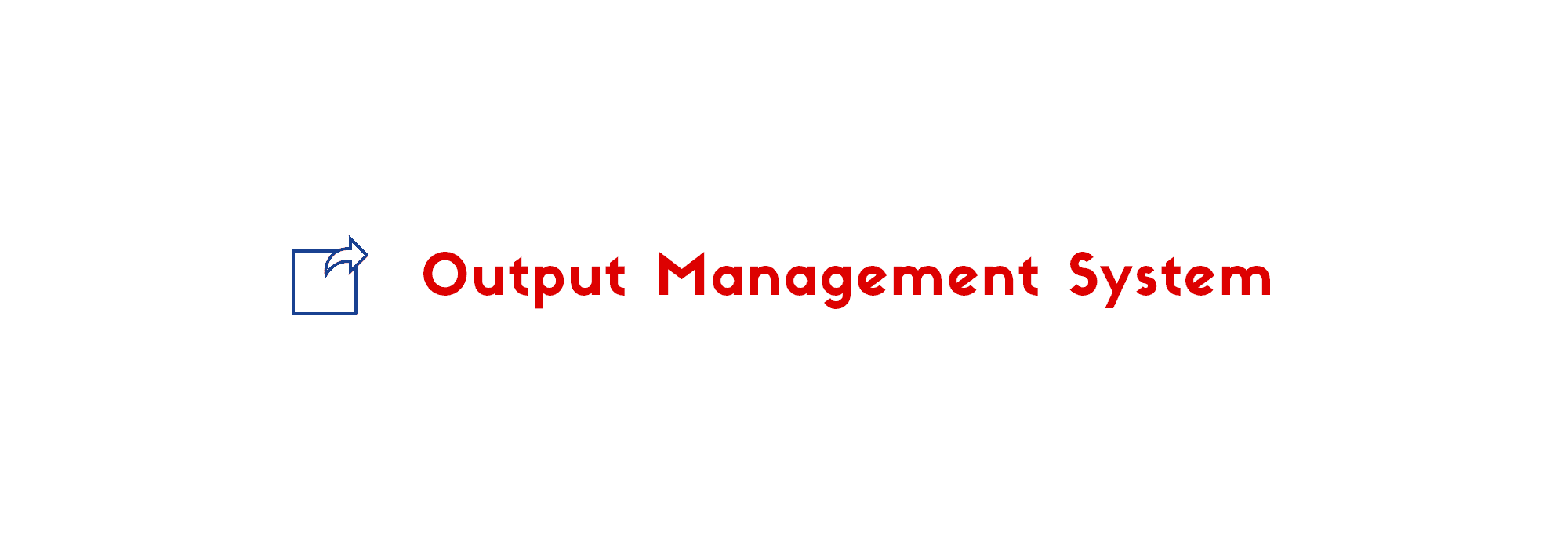

Mercury Suite
Output Management System „OMS“
Mercury OMS is the central module for controlling print output. All data sources, from SAP to cloud printing, can be linked to any output device.
„ Highlights “
Manufacturer-wide and independent solution
Fully integrated forms and overlay management
Print data conversion, etc. AFP, IPDS, Prescribe
PDF generation and workflow
The Mercury OMS / DMS Server is the original and fundamental development of a software-only print middleware solution. In doing so, the Mercury workflow itself always begins with the data collection of the information to be processed. There are five different input interfaces available:
- Data acceptance from the SAP world
- Interfaces to mainframe systems including Atlas Document Designer
- Global Printer Interface for the Microsoft Office world
- Cloudprinting / Airprint
After receiving the data to be printed, these are standardized within the Mercury OMS server into a uniform format. Subsequently, depending on the application, the originally diverse data can be processed by various modules within the Mercury OMS server. These are:
- OMR und Barcode Modul zur Erstellung von Etiketten, allgemeiner Barcodeaufdruck, oder zur Ansteuerung der unterschiedlichsten Nachbearbeitungssysteme.
- Overlay and Forms Manager for superimposing static forms on raw data.
- Reprint and cluster module for distribution of printed pages
- Follow "2" Print module for secure retrieval of all print data, manufacturer-wide
- Rule system for implementing the company workflow
- Conversion modules to process host data such as AFP, IPDS, Prescribe, Metacode, XES
- Email input and output port, cloudprinting and Apple Airprint
- PDF workflow and interface to archiving systems
- Fieldscanner for extracting and interpreting data content for workflow control.
Based on Mercury's extensive ability to receive data, from SAP printing to Microsoft applications and cloud printing to host printing, Mercury can dynamically process these input data through its internal processing modules and then map them into a single, cross-vendor workflow. All print data are standardized.
In the area of host printing, data conversion is still an important Mercury module today. Supplementary modules in the area of bar code generation, font conversion and rule-based printing are very important for SAP printing and are used continuously. They convert the classic host data into standard formats for integration into the overall, unified workflow of the Mercury suite. If the host application also provides user IDs, this data can be integrated into the Mercury Follow "2" print workflow in addition to SAP and GPI printing.
This is where the module technology and compatibility within the Mercury Suite come into play. No matter what data source information is provided from, Mercury can process and map it into a standardized workflow - one of Mercury's unique selling points.
In other words:
If a user fetches his print jobs from any output device using authentication, he can see all of his documents, no matter what application they are created with, be it SAP, GPI Cloud or host application. In addition, formatting can be performed in this workflow at any time, individually according to rules, or graphical elements can be added to enrich the overall layout.
The modules of the overlay manager within the Mercury print server are responsible for the enrichment and processing of already formatted raw data. In this case, the data parser in conjunction with the rule module, depending on the content of the data, even controls the application of the overlays and barcodes. These can also be generated by an integrated bar code module from data content, an extremely important process for SAP printing.


